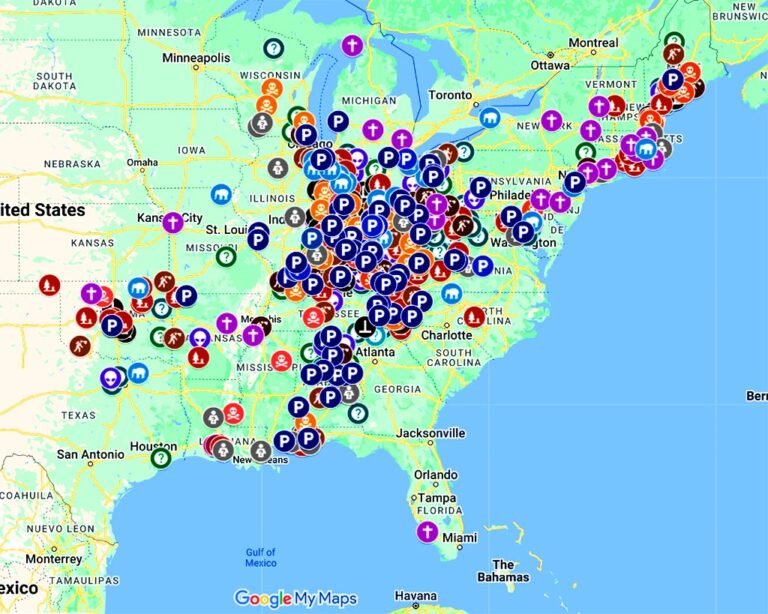How Exactly is Homelessness Defined?
Homelessness is often defined as a pervasive societal challenge, encompasses individuals and families lacking a fixed, regular, and adequate nighttime residence. This intricate web extends beyond a lack of shelter, encompassing those living in temporary housing, shelters, or places not designed for human habitation.
Imagine walking down a city street, the energy buzzing around you, while someone huddled in a doorway, their belongings gathered in a plastic bag, fades into the background noise. Homelessness in America isn’t just a statistic; it’s a heartbreaking reality that touches every corner of our nation, affecting individuals from all walks of life.
We often see homelessness as a singular issue, like a puzzle with one missing piece. But the reality is far more complex. It’s a multi-faceted puzzle box with interlocking challenges—poverty, mental health, addiction, domestic violence, lack of affordable housing, and systemic inequities all playing a role.
Did you know?
On any given night in America, over half a million people experience homelessness? [1] It’s a sobering statistic, and it represents real people—families with children, veterans struggling to reintegrate, individuals grappling with mental illness or addiction, and those caught in a cycle of poverty they can’t escape.
This exploration delves into the heart of homelessness, peeling back the layers of complexity to reveal its underlying causes. We’ll confront the challenges, explore potential solutions, and advocate for a compassionate and holistic approach that goes beyond band-aid solutions and tackles the root causes of this persistent societal problem.
Addressing homelessness in America requires a multi-faceted, compassionate approach that tackles root causes, provides comprehensive support services, expands access to affordable housing, and promotes systemic change to create a more equitable and inclusive society where everyone has a safe and stable place to call home.
The Many Faces of Homelessness: Breaking Down Stereotypes
The word “homeless” often conjures a specific image, a stereotype that can blind us to the vast diversity of experiences within this population. It’s time to challenge these assumptions and recognize the human stories behind the label.
- The Family in Crisis: Imagine a single mother, laid off from her job, struggling to afford rent, and forced to seek shelter with her young children. Family homelessness is a growing crisis in America, with many families facing impossible choices between paying rent, putting food on the table, or affording healthcare. [2]
- Fun Fact: Family homelessness often goes unnoticed as families may double up with relatives or stay in motels, making it challenging to track and address.
- The Veteran Lost in Transition: Picture a veteran, returning from service with physical or emotional scars, struggling to find their footing in civilian life and slipping through the cracks of the support system. Veteran homelessness is a particularly heartbreaking aspect of this crisis, as those who served our nation are left without the basic need of a safe place to live. [3]
- The Individual Battling Addiction: Imagine someone grappling with substance use disorder, their life consumed by the need to feed their addiction, pushing away loved ones, and losing their home in the process. Addiction often plays a role in homelessness, as substance use can strain relationships, interfere with employment, and lead to financial instability. [4]
- The Youth Aging Out of Foster Care: Imagine a young adult, aging out of the foster care system without the family support, resources, or guidance to navigate independent living, ending up on the streets through no fault of their own. Youth experiencing homelessness are incredibly vulnerable, facing increased risk of exploitation, abuse, and trafficking. [5]
- The Individual Facing Mental Health Challenges: Imagine someone struggling with mental illness, unable to hold down a job, maintain stable housing, or access the care they need, their condition spiraling downward. Mental health challenges often contribute to homelessness, and individuals living on the streets may face greater barriers to accessing the support and treatment they need. [6]
- Chronic Homelessness: Chronic homelessness refers to individuals who have experienced homelessness for an extended period, often struggling with complex, intersecting challenges, including chronic health conditions, disabilities, and substance use disorders. They often require intensive support and intervention to transition out of homelessness permanently. [7]
Untangling the Knot: Understanding the Underlying Causes of Homelessness
Homelessness is rarely caused by a single factor; it’s usually the result of a complex interplay of personal, social, and economic forces that converge to create a perfect storm. Let’s unravel this knot of contributing factors to better understand the root causes of homelessness and develop effective solutions.
- Lack of Affordable Housing: The widening gap between wages and the cost of housing is a primary driver of homelessness. Many individuals and families simply cannot afford rent or find affordable housing options in their communities, leading them to fall behind and ultimately lose their homes. [8]
- Poverty and Income Inequality: Poverty creates a foundation for vulnerability to homelessness. Low wages, limited job opportunities, and systemic inequities make it challenging for individuals and families to earn enough to cover their basic needs, leaving them one unexpected expense away from financial disaster. [9]
- Mental Illness and Substance Use Disorders: Mental health challenges and addiction often play a role in homelessness. These conditions can make it difficult for individuals to maintain employment, stable housing, or healthy relationships, increasing their vulnerability to homelessness. [10]
- Domestic Violence and Abuse: For many individuals, especially women and children, domestic violence and abuse force them to flee their homes, often with limited resources or support, leading them to seek shelter or end up on the streets. [11]
- Lack of Access to Healthcare: Limited access to affordable healthcare can exacerbate existing health conditions, mental illness, or substance use disorders, making it more challenging for individuals to stabilize their lives and maintain housing. [12]
- Systemic Inequities: Racial disparities, discrimination, and historical injustices play a role in perpetuating homelessness. People of color, LGBTQ+ individuals, and other marginalized groups often face greater barriers to accessing resources and support, increasing their vulnerability to homelessness. [13]
- Lack of Supportive Services: A shortage of supportive services, including shelters, transitional housing, mental health care, substance abuse treatment, and job training programs, can make it challenging for individuals to exit homelessness and rebuild their lives.
Beyond the Band-Aid: A Holistic Approach to Addressing Homelessness
To effectively address the complexities of homelessness, we need solutions that go beyond addressing immediate needs, tackling the root causes, providing ongoing support, and breaking the cycle of homelessness. Here’s a roadmap for a holistic approach:
- Expanding Affordable Housing Options: Increasing the supply of affordable housing is a cornerstone of any effective strategy to combat homelessness. This includes supporting the construction of new affordable housing units, providing rental assistance programs, and implementing policies to prevent rent increases and protect tenants’ rights. [14]
- Providing Comprehensive Support Services: Individuals experiencing homelessness often require a range of support services to address their unique needs, including mental health care, substance abuse treatment, healthcare access, job training, and educational opportunities. These services should be readily accessible, integrated, and tailored to meet the specific challenges faced by each individual.
- Addressing the Root Causes of Homelessness: Tackling the underlying causes, including poverty, lack of affordable housing, mental illness, and systemic inequities, is essential for preventing homelessness and creating lasting solutions. This requires investing in social programs, promoting economic opportunity, and addressing social determinants of health.
- Employing Housing First Strategies: Housing First is an approach that prioritizes providing permanent housing for individuals experiencing homelessness without preconditions like sobriety or employment. Studies have shown that Housing First models can be more effective than traditional shelter-based approaches in reducing chronic homelessness. [15]
- Promoting Collaboration and Coordination: Addressing homelessness effectively requires collaboration among government agencies, non-profit organizations, community groups, and individuals with lived experience. Creating a coordinated network of services and resources can enhance the effectiveness of interventions and create a more comprehensive support system.
- Increasing Awareness and Challenging Stigma: Public awareness campaigns can help challenge the stigma surrounding homelessness, fostering empathy, understanding, and a sense of collective responsibility.
- Empowering Individuals: Involving individuals with lived experience in designing and implementing solutions can provide valuable insights and create more effective and impactful interventions.
- Focusing on Prevention: Investing in upstream interventions, such as affordable housing initiatives, early childhood education, job training programs, and mental health support services, can help prevent homelessness from occurring in the first place. [16]
Unique Challenges
- Funding Limitations: Securing adequate funding for comprehensive homeless services, affordable housing initiatives, and preventative programs is an ongoing challenge, requiring sustained political will and public investment.
- Political Will and Public Support: Gaining the political will and public support for implementing comprehensive and long-term solutions to homelessness can be challenging.
- NIMBYism (“Not In My Backyard”): Resistance to the development of affordable housing or supportive housing projects in certain neighborhoods (NIMBYism) can create obstacles to expanding housing options for individuals experiencing homelessness.
- Stigma and Discrimination: Stigma and discrimination against individuals experiencing homelessness can create barriers to employment, housing, and accessing essential services.
- The Complexity of the Issue: The multi-faceted nature of homelessness, with its intersecting causes and diverse experiences, requires multifaceted solutions that can be challenging to implement and coordinate.
What next?
The homelessness epidemic in America is a complex challenge, a societal crisis with deep roots. But amidst the heartbreak and despair, there’s a glimmer of hope. We are not powerless against this tide. We possess the knowledge, the resources, and the compassion to create a future where every individual has a safe and stable place to call home.
Imagine a future where affordable housing is abundant, where supportive services wrap around those in need, and where systemic inequities are dismantled, brick by brick. Envision communities where mental health is prioritized, addiction is treated with compassion, and second chances are readily available.
This vision isn’t a utopian dream; it’s a achievable goal. By investing in Housing First models, expanding access to comprehensive support services, and addressing the root causes of homelessness, including poverty, mental health, and addiction, we can break the cycle of despair and build a society where everyone has the opportunity to not just survive, but to truly thrive.
It requires a collective effort – policymakers enacting meaningful legislation, community organizations providing essential services, individuals volunteering their time and resources, and each of us choosing empathy over judgment. The path forward is clear, and the time for action is now. Let’s rise to the challenge, embracing compassion and innovation as our guiding lights, and build a future where homelessness is not a persistent reality, but a fading memory.
Key Takeaways
- Homelessness in America affects a diverse population, including families, veterans, individuals struggling with addiction, youth, and those facing mental health challenges.
- The causes of homelessness are complex and interwoven, encompassing poverty, lack of affordable housing, mental health, addiction, domestic violence, and systemic inequities.
- Addressing homelessness effectively requires a holistic approach, tackling root causes, providing comprehensive support services, expanding affordable housing, and fostering a culture of compassion and understanding.
By challenging stereotypes, confronting root causes, and embracing a holistic approach that prioritizes housing first, supportive services, and systemic change, we can create a future where everyone has a safe and stable place to call home.
The journey towards ending homelessness in America will require sustained effort, collaboration, and a collective commitment to creating a more equitable and inclusive society. But it’s a journey worth undertaking—because a society that leaves its most vulnerable members behind is not truly a society at all.
Let’s unravel the knot of homelessness together, one compassionate act at a time, until every individual has a chance to not just survive, but to truly thrive.
References
[1] National Alliance to End Homelessness. (2023). The State of Homelessness in America. Retrieved from https://endhomelessness.org/homelessness-in-america/
[2] U.S. Department of Housing and Urban Development. (2023). The 2022 Annual Homeless Assessment Report (AHAR) to Congress. Retrieved from https://www.hud.gov/press/press_releases_media_advisories/HUD_No_23_046
[3] National Coalition for Homeless Veterans. (2023). About Veteran Homelessness. Retrieved from https://nchv.org/index.php/about-veteran-homelessness/
[4] Substance Abuse and Mental Health Services Administration (SAMHSA). (2023). Homelessness and Substance Abuse. Retrieved from https://www.samhsa.gov/find-help/national-helpline
[5] National Alliance to End Homelessness. (2023). Youth Homelessness. Retrieved from https://endhomelessness.org/homelessness-in-america/who-experiences-homelessness/youth/
[6] National Alliance on Mental Illness (NAMI). (2023). Homelessness and Mental Illness. Retrieved from https://www.nami.org/About-Mental-Illness/Mental-Health-Conditions/Related-Conditions/Homelessness
[7] U.S. Interagency Council on Homelessness. (2023). Defining Chronic Homelessness. Retrieved from https://www.usich.gov/solutions/housing/chronic-homelessness/
[8] National Low Income Housing Coalition. (2023). The Gap: A Shortage of Affordable Homes. Retrieved from https://nlihc.org/gap
[9] Center on Budget and Policy Priorities. (2023). Poverty and Inequality. Retrieved from https://www.cbpp.org/research/poverty-and-inequality
[10] Tsai, J., & Mares, A. S. (2015). Risk factors for homelessness among veterans: A review of the literature. Aggression and violent behavior, 25, 105-114.
[11] National Network to End Domestic Violence. (2023). Statistics. Retrieved from https://nnedv.org/statistics/
[12] National Health Care for the Homeless Council. (2023). Why Health Care for the Homeless? Retrieved from https://nhchc.org/about/why-health-care-for-the-homeless/
[13] National Alliance to End Homelessness. (2023). Racial Equity and Homelessness. Retrieved from https://endhomelessness.org/resource/racial-equity-and-homelessness/
[14] U.S. Department of Housing and Urban Development. (2023). Rental Assistance. Retrieved from https://www.hud.gov/topics/rental_assistance
[15] Tsemberis, S., Gulcur, L., & Nakae, M. (2004). Housing First, consumer choice, and harm reduction for homeless individuals with a dual diagnosis. American journal of public health, 94(4), 651-656.
[16] National Alliance to End Homelessness. (2023). Preventing and Ending Homelessness. Retrieved from https://endhomelessness.org/




















+ There are no comments
Add yours